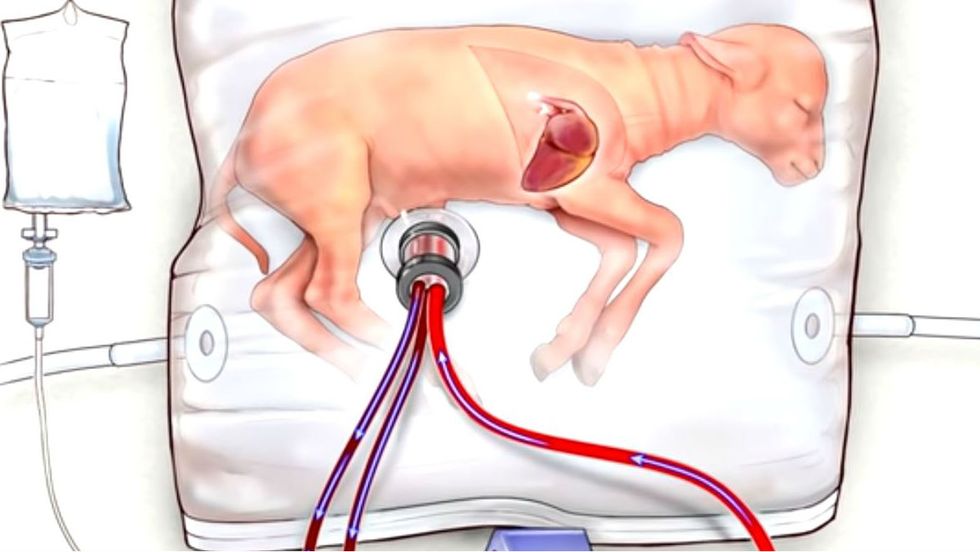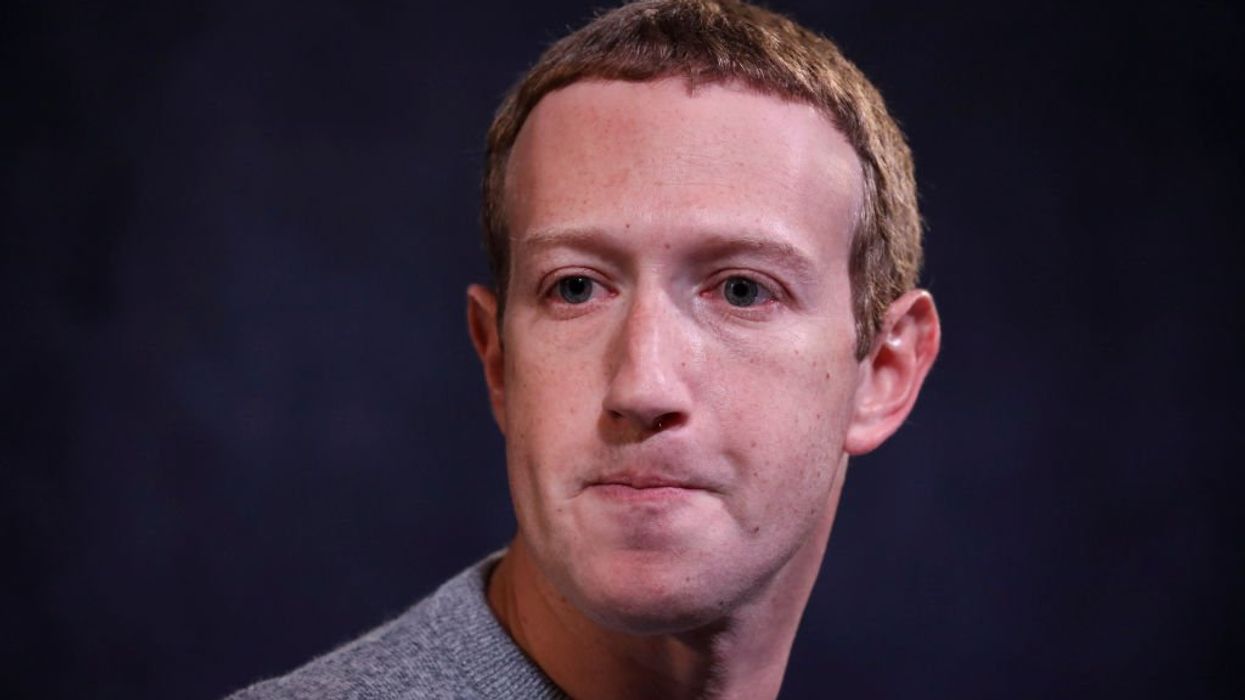
© 2024 Blaze Media LLC. All rights reserved.
In case you missed it: Scientists at the Children’s Hospital of Philadelphia have developed an “artificial womb” in which eight pre-born lambs were able to grow and develop to maturity, in what looks like a system of tubes and bags filled blood and fluid that mimics a fully-functional uterus.
According to a story at The Verge:
Over four weeks, [the lambs’] lungs and brains grew, they sprouted wool, opened their eyes, wriggled around, and learned to swallow, according to a new study that takes the first step toward an artificial womb. One day, this device could help to bring premature human babies to term outside the uterus — but right now, it has only been tested on sheep.
But what are we ever to make of such a development? There are two sides to this coin.
Of course the bioethical implications of this development are stark, at least at first blush. Images of children born completely independent of parents, a la “Brave New World” or “Gattaca,” and all the wicked, dehumanizing baggage that comes with such a scenario immediately spring to mind.
Perhaps the clearest warning against the creation of a fully artificial womb comes from one of its proponents, feminist theorist Shulamith Firestone, in her 1970 manifesto “The Dialectic of Sex,” which promotes the “freeing of women from the tyranny of their reproductive biology by every means available, and the diffusion of the childbearing and childrearing role to the society as a whole, men as well as women.”
We’ve heard watered-down versions of this dehumanizing creed for ages now, in the promotion of the killing of the unborn. The next stop on this train would be fully stripping out the role of mothers for the sake of “equality.”
Certainly, in contrast to the systematic murder of the unborn that our society engages in, this doesn’t seem so bad, but taking humanity out of the human-making process comes with its own set of problems.
However, such a reality is far off, according to Dr. Alan Flake, fetal surgeon and the lead author of the study on the device.
“It’s complete science fiction,” he says in the Verge story, “to think that you can take an embryo and get it through the early developmental process and put it on our machine without the mother being the critical element there.”
It would seem that even in a world of three-parent embryos and the widespread disintegration of the family, our reach hasn’t exceeded our biological reality too much for now.
Rather, the bag’s success would seem to present the hope of a brighter future for children born prematurely and their families, pushing back the ever-changing line of outside-the-womb viability to dates in pregnancy earlier than ever before. The eventual hope of the device is that it would be used to help children born prematurely. Premature birth is still the leading cause of death for children under five worldwide, according to the World Health Organization, with rates increasing as recently as November.
But a real bombshell of a benefit came in an NPR interview of a bioethicist about what this could mean for the life-vs.-abortion debate in the United States.
"Up to now, we've been either born or not born. This would be halfway born, or something like that. Think about that in terms of our abortion politics," she says.
What a peculiar thought. Imagine if that line were blurred. Just imagine if, like the 4D ultrasound, such a method drove home to the general public what so many pro-lifers already know to be true: that children are human, regardless of their geographic relation to their mothers or the state of their umbilical cords.
Yes, think of a politics where the acolytes of the abortion industry could no longer hide behind their proffered delusions that a pre-born child is “just a clump of cells,” or at least would be thought absolutely delusional beyond a shadow of a doubt for doing so.
In their comprehensive history “Abortion and the Pro-Life Movement: An Inside View,” Dr. and Mrs. John C. Willke outline how scientific discoveries that preceded Roe v. Wade by centuries actually led to pro-life protections for the unborn in the old world. In the opening chapters of the book, the couple hash out how the development of such things as the microscope led people to realize that life was present at the moment of conception, and laws surrounding when “quickening” of an infant supposedly happened were changed to reflect that reality.
Likewise here, there lies the potential for scientific discovery to impose upon us an even more truthful understanding of where human life begins and what that entails.
Of course, this technology could be used for bad ends. Techology always can be. There is indeed always the danger that technology will outpace our maturity to use it. Just look at what things like cars, smartphones, video games, and the internet have done to minds, families, and communities who were not cautious about what their use would mean for humanity. We have seen advances in convenience, but we have also seen things like the decline of reading and family time, the loss of the walkable community, and the proliferation of internet pornography, each with its own devastating effects.
But these are cautions, not injunctions. As shown above, technology is merely a means that can be used for either good or bad, and so — could an artificial womb.
Certainly, if we’re reckless with the potential outcomes of this development, a Huxleyan future could indeed result, and history has shown us again and again that we definitely must learn to be more careful with technology. But that is no reason to let concern overshadow the hope that innovation brings with it, especially for our most vulnerable.
The best that could come from a device blurring the lines between born and pre-born is that it might force all of us to realize that what our abortion politics have been really doing all these years: blurring the line between human and inhuman.
Want to leave a tip?
We answer to you. Help keep our content free of advertisers and big tech censorship by leaving a tip today.
Want to join the conversation?
Already a subscriber?
more stories
Sign up for the Blaze newsletter
By signing up, you agree to our Privacy Policy and Terms of Use, and agree to receive content that may sometimes include advertisements. You may opt out at any time.
© 2024 Blaze Media LLC. All rights reserved.
Get the stories that matter most delivered directly to your inbox.
By signing up, you agree to our Privacy Policy and Terms of Use, and agree to receive content that may sometimes include advertisements. You may opt out at any time.



